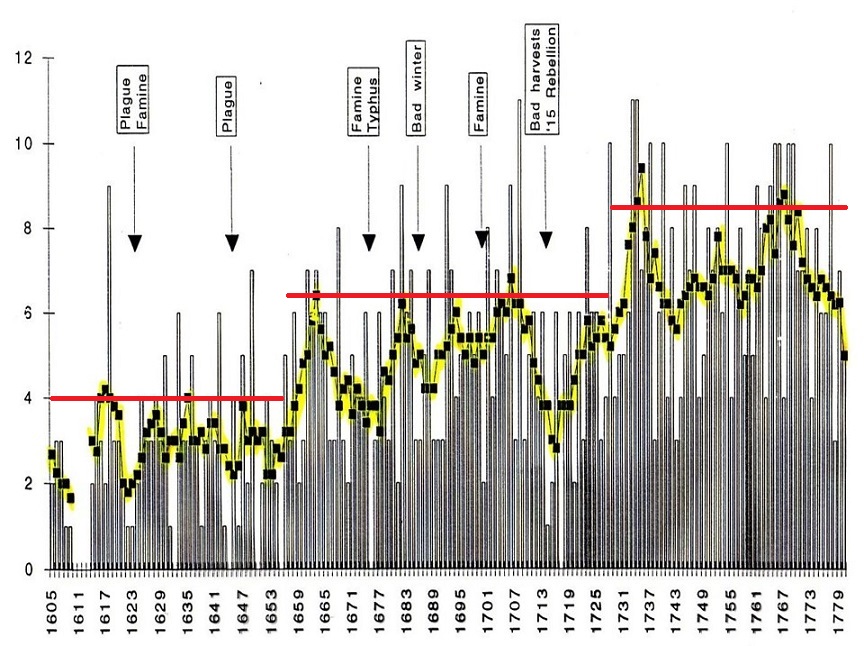
Take-Off!

Introduction
I have yet to see a textbook on the period which does not teach its readers about 'The Industrial Revolution' ... and most present it as a great and exciting achievement. Here, for instance is what Peter Moss said in his History Alive 3 textbook in 1968:
The Industrial Revolution was the greatest change that had ever taken place in British history – or indeed in the history of the modern world, because Britain became industrialised almost 50 years before any other country.
The explosion shook the nation to its very foundations and turned its whole way of life upside down. Even today ... the effects of this great upheaval are still being felt.
It may surprise you, therefore, to learn that academic historians have been unable to decide whether the Industrial Revolution was a good thing or a bad thing, when it started and finished ... even whether it ever happened at all! The historiography of the 'Industrial Revolution' is interesting, and I have written a fact-page about it here.
However – as we saw in the webpage on The Age of Change – there is no denying that the world in 1914 was VERY different from that of 1700.
Something happened and it is worth studying what and when.
In 1960, the economic historian WW Rostow likened the Industrial
Revolution to an aeroplane flight. There had been periods of
economic growth in the past, but they had always fizzled out and lapsed
back into poverty or famine. Something, said Rostow, happened in
this period which was a "take-off into self-sustained growth" – the
economy grew and kept on growing.
Rostow saw the Industrial Revolution, therefore, as having three stages:
1. Preconditions: for centuries, the British economy was getting ready for the Industrial Revolution – notably, there were developments in trade;
2. Take-off: at some point (Rostow said the 1780s) businessmen began to invest large sums of money in industry – production rose rapidly;
3. Maturity: after a while (Rostow said 1850) this growth began to benefit ordinary people.
This webpage will allow you to investigate this idea.
After you have studied this webpage, answer the question sheet by clicking on the 'Time to Work' icon at the top of the page.
Links:
The following websites will help you research further:
The Industrial Revolution:
•
Lively overview – Crash Course History
1 Baptisms in Middridge in the 18th Century

Interrogating the
source:
This graph of baptisms in Middridge (the yellow line) is an indicator
of the ups and downs of the population of Middridge (a small village in
County Durham) during the 17th and 18th centuries. You
will see that, although the population kept trying to rise, it kept
hitting a ceiling
– the red lines – when population growth
outstripped production ... and disease or
famine brought the baptism rate crashing down. There
were two enclosures in Middridge – 1634 and 1704 – which, 25 years later,
allowed a permanent rise in the population ... but the better farming
merely raised the ceiling; it did not do away with it.
2 Indicators of 18th Century Economic Growth

Interrogating the
source:
We do not have any figures for Britain's economic growth
in the 18th century
– the government did not keep such data.
In 1962, however, Deane & Cole published figures on various activities
that had been
kept; they were, they said, indicators of the general growth of the
economy.
Some historians have suggested that these figures present too positive a
picture of economic growth; others that they are not positive enough.